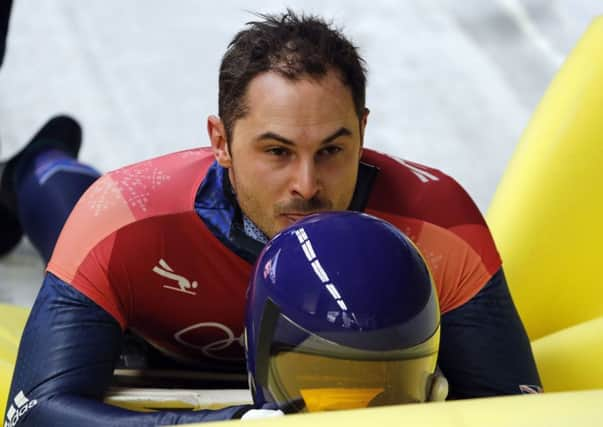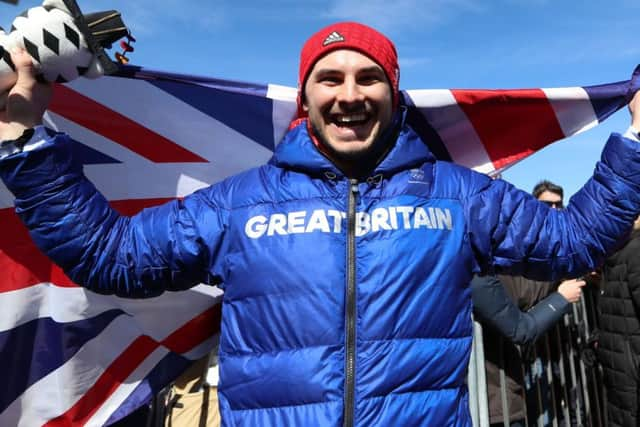Winter Olympics: How a bit of Sheffield steel sent Dom Parsons sliding to glory


Parsons is one of a number of top sliders who uses equipment and technology from Bromley Sports, which has a base at the Advanced Manufacturing Park in Sheffield, including South Korean gold medallist Yun Sung-bin, who is also coached by Bromley’s brother Richard.
And Parsons has been working particularly closely with Bromley, a former world champion and four-time Olympian, with whom he competed at the Sochi Games four years ago.
Advertisement
Hide AdAdvertisement
Hide AdBromley said: “Dom’s sled and his runners have been specifically designed for this track and in particular for this kind of ice.


“It’s very dry and cold ice, so we developed a new style of runner that suits this ice position – so it is about the combination of a personalised sled and runners.
“The track isn’t a particularly highly-defined track and it requires a different type of sled. Each track has a different personality, and like a Formula One car, you have to have a sled that you can adjust to that different personality.”
Concerns have been raised among rival nations about the technological advances made by the Great Britain squad, with protests regarding the team’s new aerodynamic skinsuits being dismissed by the International Bobsleigh and Skeleton Federation.
Advertisement
Hide AdAdvertisement
Hide AdAfter watching Martins Dukurs make mistakes which left the five-time world champion out of the medals at the expense of Parsons, Latvian coach Zintis Ekmanis criticised the increasing use of technology, in particular by the British team, in the sport.


“The technical stuff at the last moment changed things for Great Britain – it made a difference,” said Ekmanis. “It is the job of the IBSF to rule, but I’m sorry, they are weak.”
The men’s race was a spectacular success for the Bromley brothers with Richard managing Yun’s remarkable rise to become the first South Korean to win an Olympic sliding crown.
And Kristan Bromley, who is the partner of 2006 Olympic silver medallist Shelley Rudman, said Parsons’ success went some way to making up for his own inability to cap his glittering career with an Olympic medal.
Advertisement
Hide AdAdvertisement
Hide Ad“Dom is a friend and someone I respect massively,” said Bromley. “I didn’t quite achieve what I wanted to on this level, but I feel extremely satisfied that I have been able to help Dom on his journey.”
Parsons had started skeleton with a hangover and cannot wait to get another one after rising to the occasion in dramatic fashion to claim Great Britain’s first men’s skeleton medal in 70 years.
The 30-year-old, whose only World Cup podium was in Calgary in 2013, thought he had blown his unlikely chance when a late mistake in his final run saw him slip below Olympic Athlete of Russia’s Nikita Tregubov with two sliders still to go.
But incredibly, it was five-times world champion Dukurs who crumbled under pressure, a series of uncharacteristic errors dumping the Latvian 0.11 behind Parsons, and all but confirming a bronze for the Briton.
Advertisement
Hide AdAdvertisement
Hide AdParsons’ route to his medal had ignominious beginnings. He first set eyes on a skeleton in 2007 when he was cajoled into attending a push-start trial by a friend despite freely admitting he was “feeling the effects of too much fun the night before.”
But he impressed enough to be invited to further GB camps, and began a turbulent career trajectory which saw him axed from the squad on two occasions due to funding issues, as well as a series of career-threatening injuries.
Parsons admitted: “It was a bit of a rollercoaster after the fourth run. I was devastated – I thought I’d binned it totally.
“I’m very grateful that I got lucky. It doesn’t seem real to me. Now I am going to make sure I enjoy the rest of the Games.”
Advertisement
Hide AdAdvertisement
Hide AdLizzy Yarnold held her breath and had a dizzy spell as she surged into contention to defend her Olympics skeleton title in Pyeongchang.
The Sochi 2014 gold medallist is in third place at the halfway stage of the four-run, two-day competition, 0.07 seconds ahead of team-mate Laura Deas.
After her fourth-placed finish in the 500m on Tuesday, Elise Christie’s redemption story continues in the 1,500m this morning with every round before lunchUK time. The Scot has played down her chances, but she is world champion in the distance.